How to Not Get Robbed at the Beach: A Guide to Actually Relaxing
I’ve practically lived on the coast my whole life. From teaching surf lessons to spending way too much money on underwater camera gear, the beach is my happy place. But I’ve seen that perfect-day vibe get shattered in an instant, more times than I can count. Someone comes back from a quick swim and… wallet’s gone. Car keys have vanished. That sun-soaked good feeling just evaporates, replaced by that cold pit in your stomach. It’s a truly awful lesson to learn the hard way.
In this article
- First, Know Your Enemy: The Thief and The Sun
- The Most Important Step: Leave It Behind
- Layer 1: Hiding in Plain Sight (Deception)
- Layer 2: Real Security (Anchoring)
- My Go-To Beach Security Shopping List
- Plans for Every Type of Beach Day
- Before You Go: Your 5-Minute Emergency Prep
- What to Do If You Do Get Robbed
- A Final Word on Trust and Awareness
- Inspirational Gallery
Honestly, keeping your stuff safe isn’t about some secret, clever trick. It’s about having a simple, layered game plan. Over the years, I’ve perfected a system that’s protected thousands of dollars of my own gear. It’s not magic; it’s just about understanding the risks and using smart, practical methods. So let’s go beyond the basic tips and get into the mindset that lets you truly switch off and enjoy the water.

First, Know Your Enemy: The Thief and The Sun
Before we get to solutions, we need to be real about the problem. Beach theft is almost always a crime of opportunity. These aren’t criminal masterminds; they’re opportunists scanning for the easiest target. Their goal is simple: spot something valuable, grab it, and be gone in under 30 seconds. Your job is to make your setup look like too much hassle.
But the thief isn’t your only problem. The environment itself is out to get your gear. The sun is a killer. From my own (painful) experience, I once left my smartphone in a black lockbox in direct sunlight. An hour later, the phone was completely fried, dead forever. The heat had literally cooked it from the inside out.
Quick Tip: If you use a lockbox, don’t let it bake! A simple trick is to wrap it in a light-colored towel or just bury it under a shallow layer of cool sand. This keeps the internal temperature way down.
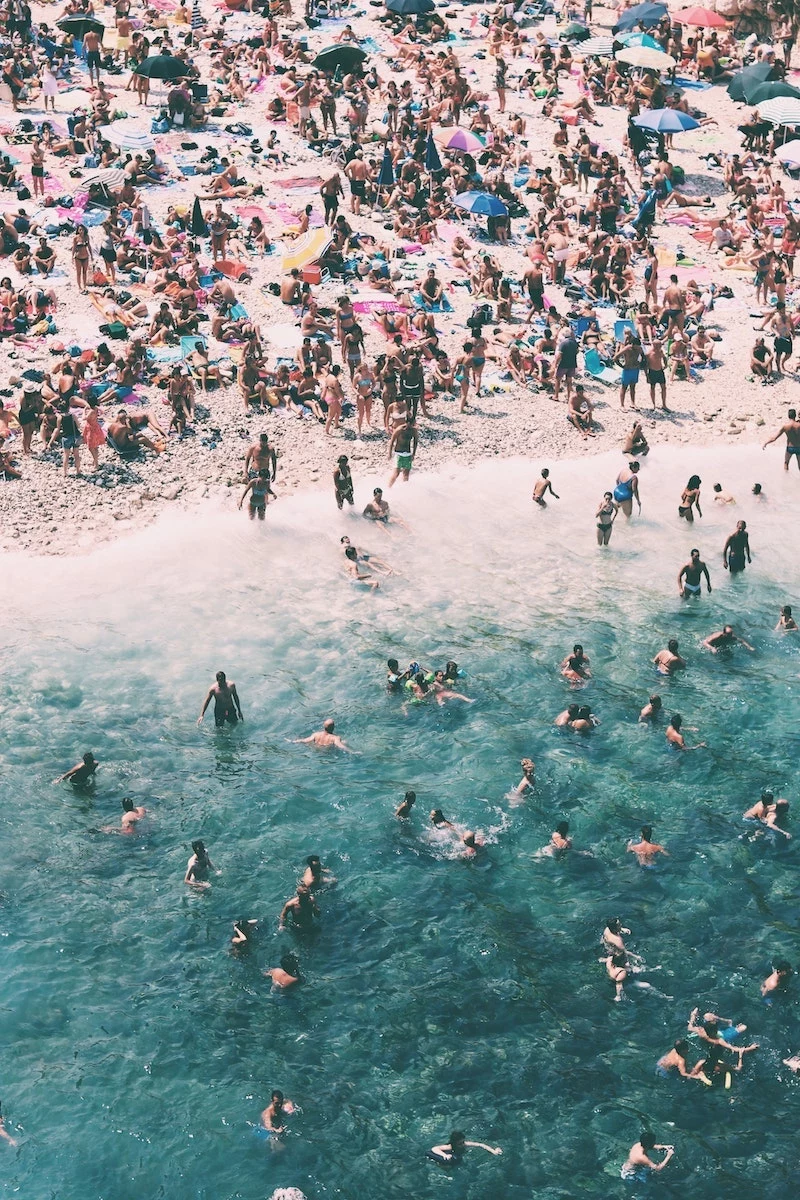
And then there’s the sand—those fine, abrasive grains love to work their way into charging ports, headphone jacks, and camera lenses, causing all sorts of damage. Throw in corrosive saltwater and humidity, and you’ve got a perfect storm for destroying electronics. A good security plan has to beat both the thieves and the elements.
The Most Important Step: Leave It Behind
The only 100% guaranteed way to not have something stolen from the beach is to… well, not bring it in the first place. This is your first and most powerful line of defense. Before you even pack your bag, be ruthless. Ask yourself, “Do I absolutely need this?”
For a typical day trip, here’s my bare-bones list:
- A Single Car Key: Not your whole keychain with your house and office keys. If your car has a simple, non-electronic “valet key,” that’s the one to bring. It’s often more water-resistant and less of a headache if lost.
- One Form of Payment: A single credit card or maybe $20 in cash. Not your whole wallet. This seriously limits your potential loss.
- Your Phone: It’s a modern-day essential for safety and photos. We’ll cover how to protect it.
- Your ID: A driver’s license is usually all you need.
Here’s your 5-minute win: Go create a dedicated “beach wallet” right now. Grab a small pouch or even a ziplock bag. Put one ID, one card, and a little cash inside. Boom. You’ve just made yourself 90% safer without spending a dime.
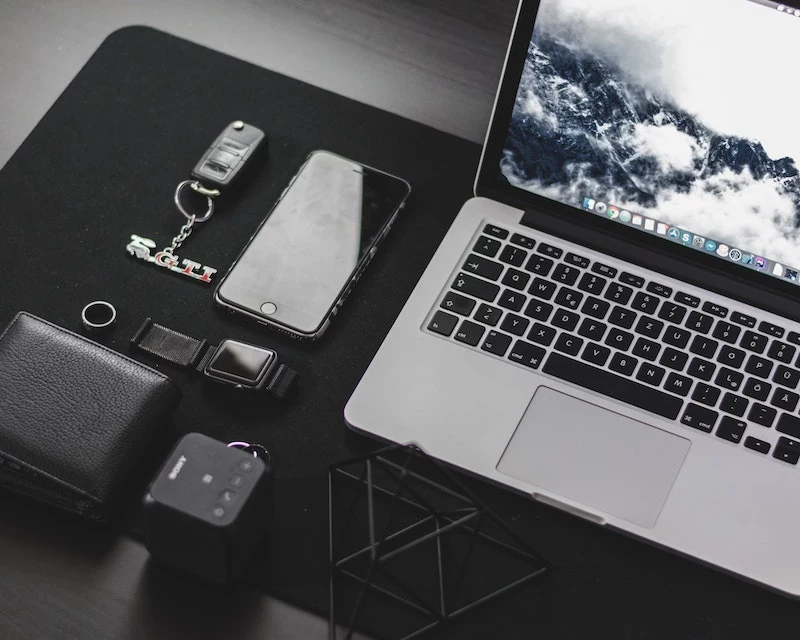
Layer 1: Hiding in Plain Sight (Deception)
Once you’ve trimmed down your valuables, the next step is to make them invisible. The idea is to hide your stuff inside things a thief would never think to steal. This is a good first step, but remember, it’s just hiding, not true security. A patient thief who sees you stashing your items can still figure it out.
The Classic Sunscreen Bottle Safe: You can buy these online, but a DIY version is easy. Just make sure you do it safely.
- Find a big, empty sunscreen bottle. The opaque, solid-color ones work best.
- Heads up! Be careful here. Use a sharp utility knife to cleanly slice off the bottom of the bottle.
- Wash the inside thoroughly with soap and water to get all the lotion gunk out. Let it dry completely.
- Slip your keys, cash, and maybe a small phone inside, and pop the bottom back on. It looks totally natural sitting on your towel.
The “Yuck” Factor: Diapers and Trash: Let’s be honest, no one is going to voluntarily inspect a used-looking diaper. This makes it a surprisingly effective hiding spot. Just take a clean diaper, wrap your items in it, and maybe sprinkle a little water on the outside to make it look… authentic. If you don’t have kids, the same idea works with other “trash.” Seal your phone in a Ziploc bag, then stick it inside a greasy-looking fast-food bag with some crumpled napkins. The only risk? A well-meaning person might try to throw your “trash” away for you!
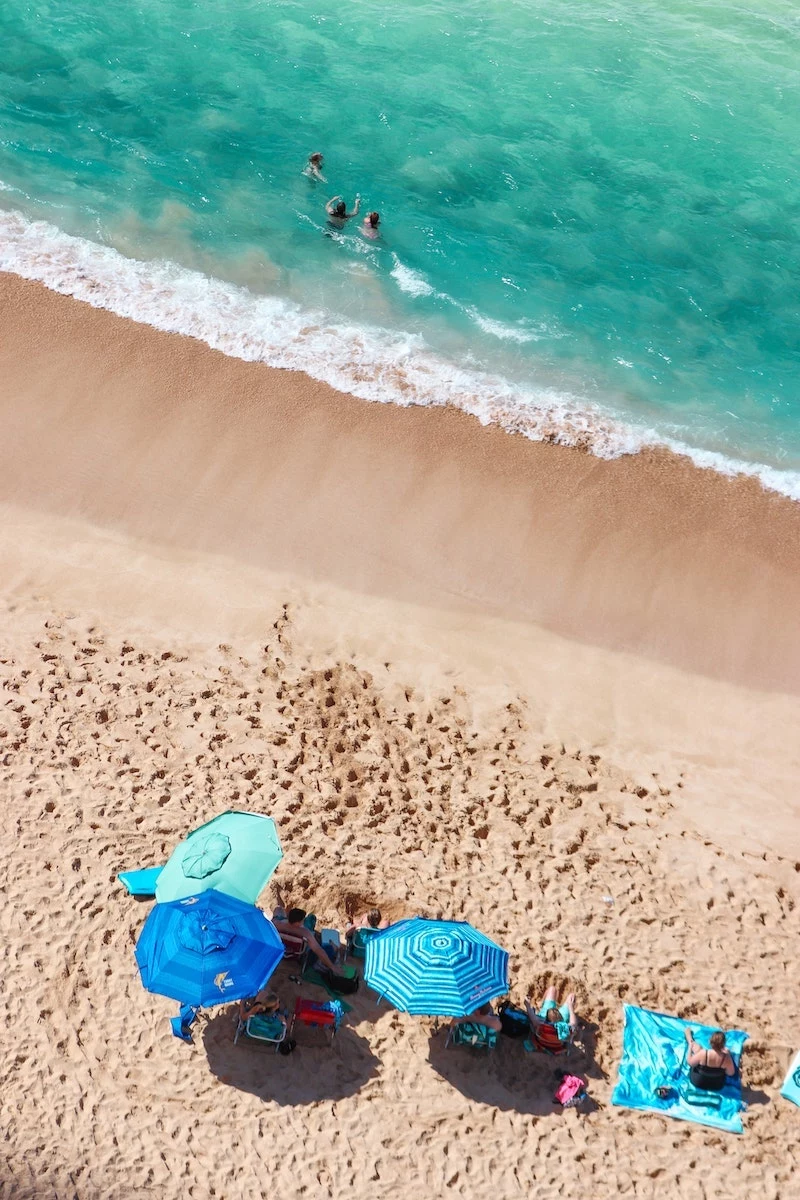
Layer 2: Real Security (Anchoring)
Hiding stuff is good. Physically locking it down is way better. This approach requires a small investment in gear, but the peace of mind is worth every penny. This is what I do with my camera equipment.
Portable beach safes or lockboxes are your best bet here. You can find them at most sporting goods stores or online, and they generally fall into two categories:
- Hard-Sided Safes: These are tough plastic or metal boxes with a combination lock. They’re fantastic for protecting phones and cameras from getting crushed. They usually cost between $25 and $50. Their best feature is a steel security cable that you use to anchor them.
- Soft-Sided Safes: These look more like small bags and are made from slash-resistant fabric (it has a steel wire mesh inside). They’re lighter and more flexible, which is great for packing, but they offer less protection from being crushed. Expect to pay around $30 to $60 for a good one.
Oh yeah, and the safe itself is only half the battle. You have to anchor it properly. I’ve seen people leave these boxes just sitting on their towel, which completely defeats the purpose. A thief will just grab the whole box and deal with it later. Loop the steel cable around something solid: a boardwalk railing, a permanent umbrella stand, the metal frame of your cooler, or a heavy beach chair. Pull the cable tight. A thief would need bolt cutters and time to get through it, and they have neither.

For the truly dedicated beachgoer, there are even sand-anchored vaults. These are like giant screws you drill deep into the sand, with a watertight, lockable compartment on top. They’re incredibly secure but are a bit bulky to carry around. They typically run from $40 to $70.
My Go-To Beach Security Shopping List
If you’re looking to gear up, here’s what I’d recommend starting with. No need to buy it all at once, just pick what fits your needs.
- A Portable Lockbox: The number one upgrade for families or anyone with electronics. Price: $25 – $60.
- A Waterproof Pouch: Essential for solo swimmers. Look for an IPX8 rating (that’s a fancy certification that means it’s fully submersible for long periods, not just splash-proof). Price: $10 – $25.
- A Car Key Safe: A non-negotiable for surfers and other water sports athletes. Don’t risk a $500 key fob replacement. Price: $30 – $60.
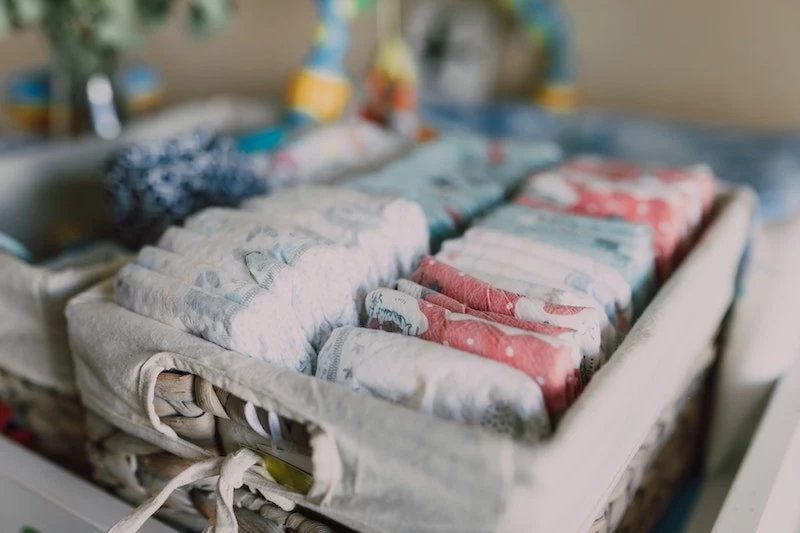
Plans for Every Type of Beach Day
Your strategy should change depending on who you’re with and what you’re doing.
The Solo Swimmer: This is the highest-risk situation since there’s no one to watch your stuff. The solution? Take your valuables with you. Get one of those IPX8-rated waterproof pouches I mentioned. It can hold your phone, a card, and a single key, and you can wear it on a lanyard or a waist strap while you swim. It’s the only truly worry-free way to go in the water alone.
The Family or Group: You’ve got the advantage of numbers! Designate a “base camp” and use a large, anchored lockbox or a locked cooler for everyone’s phones and wallets. The most important part is communication. Don’t just assume someone’s watching. Have a clear system: “Okay, I’m on watch now, you guys go swim.” It prevents the confusion that thieves thrive on.
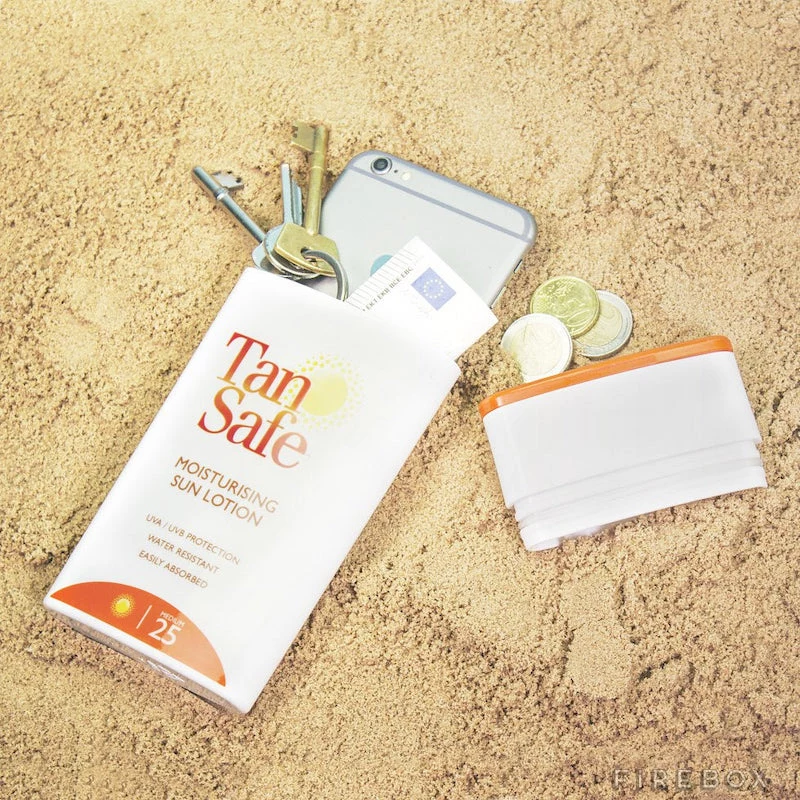
The Athlete (Surfer, Paddler, etc.): If you’re on the water for hours, your car key is your biggest vulnerability. Hiding a modern electronic key fob on your tire or in the gas cap is the first place thieves look. A proper car key safe is the professional solution. It’s a rugged little combination lockbox that attaches to a secure point on your car, like a tow hook. It’s a small investment to protect a very expensive asset.
Before You Go: Your 5-Minute Emergency Prep
What if the worst happens anyway? A little prep at home can be a lifesaver. Before your trip, take 5 minutes to do this:
- On your phone, take a quick photo of the front and back of your driver’s license, passport, and any credit cards you’re bringing.
- Save these photos to a secure cloud service like Google Drive, Dropbox, or iCloud.
- In that same folder, save a note with the 1-800 number for your bank’s lost/stolen card department.
If your wallet gets stolen, you can access all this critical info from a friend’s phone or a computer, making the process of canceling cards and filing a report a thousand times easier.
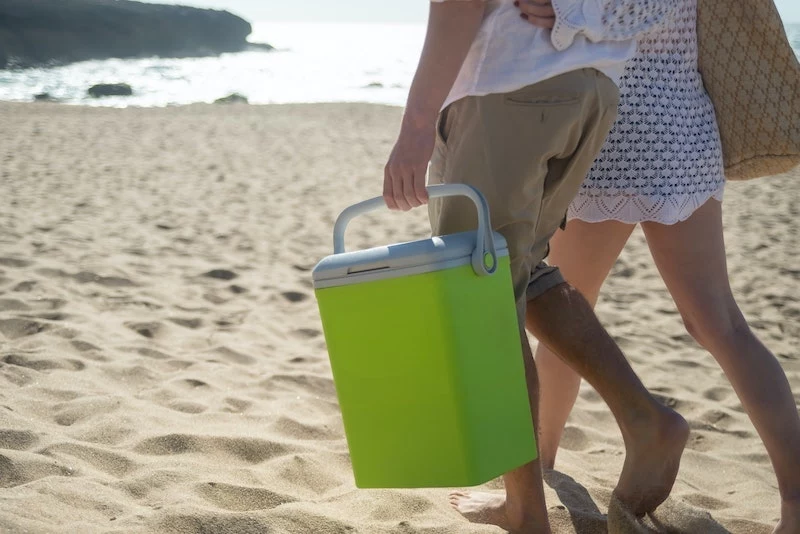
What to Do If You Do Get Robbed
Even with the best plans, bad luck can happen. If it does, stay calm and follow these steps.
- Do NOT confront the thief. Your safety is worth more than any possession. Let them go.
- Quickly assess what’s gone. Phone? Wallet? Keys?
- Cancel your cards immediately. This is why you did the prep work! Access those 1-800 numbers and start making calls.
- Report your phone stolen. Call your mobile carrier to suspend service and report the phone’s unique IMEI number as stolen. This gets it blacklisted.
- File a police report. It might feel pointless, but you’ll need that official report for any insurance claims.
- Check your insurance. Many homeowner’s or renter’s policies cover off-premises theft. It’s worth a call.
A Final Word on Trust and Awareness
It can be tempting to just ask the family sitting next to you to “watch my stuff for a minute.” I really advise against this. You have no idea who they are. They might be perfectly lovely, or they might leave two minutes after you do. Your security is your responsibility.
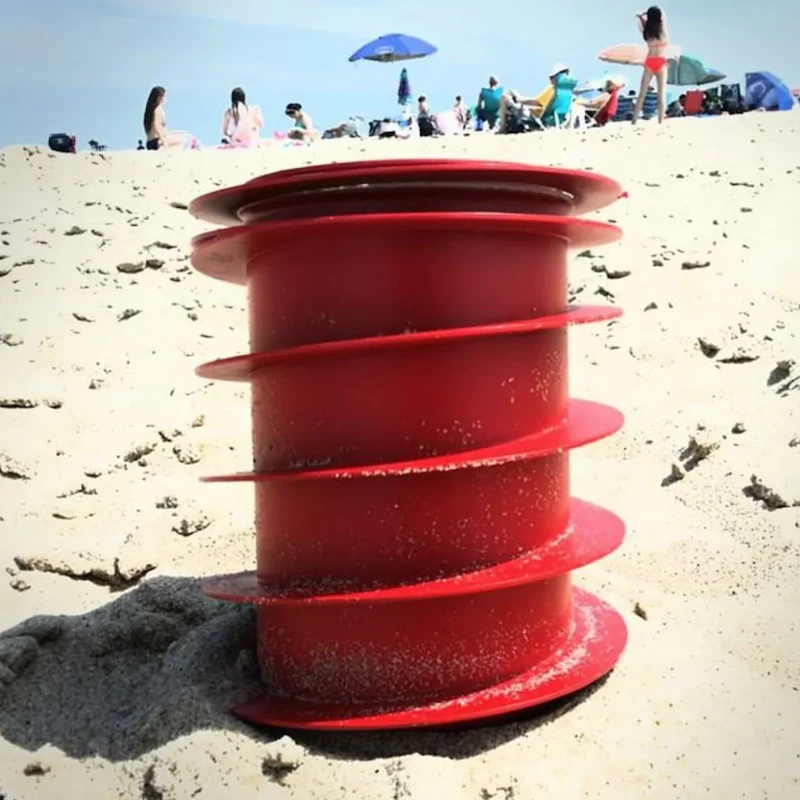
Ultimately, your best tool is your own gut instinct. When you get to the beach, take a minute to get a feel for the place. If someone seems to be paying too much attention to people’s bags, trust that feeling. Just pack up and move to a different spot.
Building these simple habits—minimizing, hiding, and locking—should become as routine as putting on sunscreen. It’s a small bit of prep that buys you incredible peace of mind. And that, after all, is what a day at the beach is supposed to be all about.
Inspirational Gallery

What about when you have to take your car keys in the water?
This is the classic surfer’s dilemma. A standard electronic car key fob is the enemy of saltwater. Leaving it on the beach is risky, but taking it in the water will destroy it. The solution is a simple, non-electronic valet or surf key—just the metal blade that opens the door. Get one cut at a hardware store for a few dollars. Lock your electronic fob safely inside the glove box, and take only the waterproof metal key with you, tucked into the key pocket of your boardshorts or wetsuit. It’s a low-tech solution that a surprising number of people overlook.










